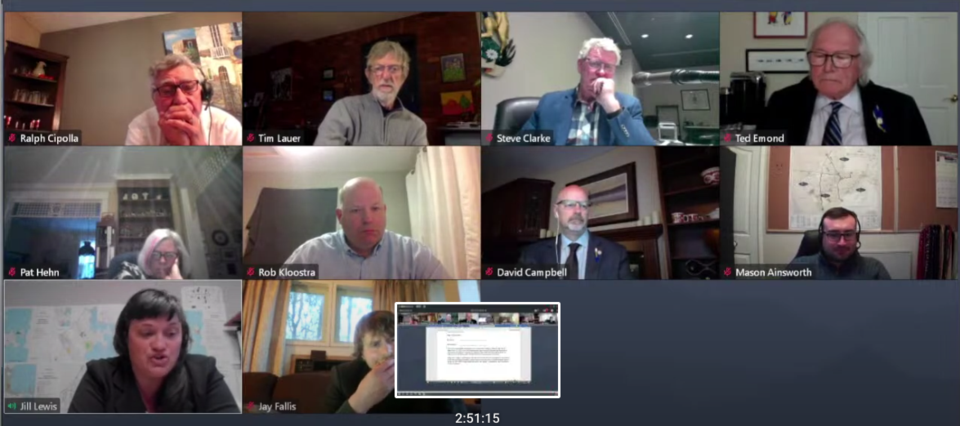An inquiry motion calling for the city to consider intensifying its employment lands was soundly defeated at council committee Monday evening.
Brought forward by Coun. Jay Fallis, the motion follows council’s decision to explore intensification options for its residential lands in April, which arose in part from community pressure to reduce urban sprawl.
The motion, which was defeated 8-1, requested city staff draft a report outlining additional studies that would need to take place to look at intensifying its employment lands in a similar fashion.
“It gives us a unique opportunity to kind of play a larger role in determining how the land is developed,” Fallis said. “I see this as a really important thing that we need to look at, and I think it’s good to look at something like this … in terms of reducing our land needs.”
He said the suggestion was “about trying to plan our community for the future and trying to avoid further environmental degradation.
“I want to do everything I can to push that initiative forward.”
“It’s not sustainable to keep pushing out and pushing out,” he added. “The more we do this, the more we’re going to regret it down the road, and the more we’re really setting our kids and our grandkids up for disaster.”
Council and staff, however, were unanimously against his idea.
Senior planner Jill Lewis said imposing development regulations on employment lands could cause the city to lose opportunities, as employers may require specific types of buildings.
“The needs of employers need to be thoughtfully considered if we’re going to attract new employment to the city,” she said.
“The examples that we looked at (for employment land intensification) were really looking at minimum heights to three storeys. If you look at attracting the Hydro One (building), if we had imposed a minimum height of two or three storeys to accommodate a multiple range of employment, I think they would have really struggled with whether Orillia would have been the place they wanted to locate because they have high security needs.”
Lewis pointed out potential employers facing development restrictions might turn to neighbouring municipalities for employment land. She also stressed the additional research would cause the city to surpass its capital budget.
Lewis said Orillia already is making great efforts to intensify development within the city.
“We are building a walkable, transit-friendly, compact Orillia,” she said.
Coun. Ted Emond similarly said if people cannot find what they are looking for in Orillia, they will look elsewhere.
“Our city has maxed out on our ability to provide that growth that is currently planned to take place, and the reality is that individuals who are seeking to live here are going to look for housing, not necessarily housing that we provide,” he said.
“The same thing goes for jobs, and when we look to create jobs, and we’re looking for an enterprise to build in Orillia, the first thing they look at is the location. Hydro One is here because Orillia met their location criteria, nothing else.”
Emond argued Orillia is already making strides to intensify its commercial space without the need to impose development restrictions on employment land, adding Orillia is a more efficient space to attract employers due to its amenities.
“We have a (waterfront redevelopment project) that is going to put significantly more jobs (there) than ever before, and in a much more intensified environment, so there’s a number of ways that we can intensify the job creation,” he said.
“We are going to need the kind of land in Orillia, that we recognize that every acre that is created within the city ... we reduce the demand that is required in the townships for comparable development,” he added. “We are on sewers, we have the transportation systems available — it’s a much more efficient way to go.”
Coun. Tim Lauer argued employment lands have more to do with the number of jobs created within an area than the type of structure that hosts the jobs.
“The employment lands are measured by the number of jobs you create,” he said. “I mean, you can have a six-storey building that’s all warehouse and only employs three people, and that does not accomplish what you’re trying to do. So, I would think the base measurement would be the number of jobs produced by an acre of land, and that would be a discussion to have with economic development.”
